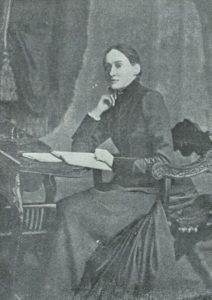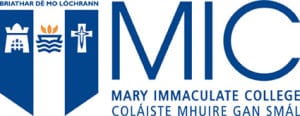Impressions of RSVP’s (Research Society for Victorian Periodicals) 2017 Conference in Freiburg, Germany
Nora Moroney, Trinity College Dublin
Germany’s Black Forest, surrounding the city of Freiburg, does not conjure up immediate associations with Victorian periodicals, familiar as it is to most of us for picturesque scenery and delicious confectionary. But last month its historic university played host to RSVP’s annual conference on the theme of ‘Borders and Border Crossings’. Over seventy scholars from Europe, the UK, Ireland and the US spent three days discussing the varieties of periodical culture in the nineteenth century. There was a pleasing congruency to the theme and location too – situated close to the borders of Germany, Switzerland and France, Freiburg provided the perfect setting for such an international cohort.
As a first-timer at the RSVP conference, I found it to be a lively and friendly gathering, and a warm welcome to the society. Apart from the annual conference (held in alternate years in Europe and the US), RSVP gives out awards, grants and fellowships, which recognise the achievements of its many illustrious members. One of the most prestigious awards, the Colby prize for a published monograph, formed the basis for this year’s keynote Robert and Vineta Colby Lecture. Alexis Easley, Andrew King and John Morton spoke about their experience editing The Routledge Handbook to Nineteenth-Century British Periodicals and Newspapers, and some of the broader issues around collaboration in periodical studies. The talk featured an enjoyable selection of video grabs from the book’s many contributors, and – showcasing the digitised nature of periodical scholars’ work – was co-hosted by Andrew King via video link from Greenwich.
Collaborative initiatives were in evidence elsewhere at the conference. Helena Goodwyn considered the international iterations of W.T. Stead’s Review of Reviews, and the editorial differences and crossovers that marked the transnational move of the journal’s contents. James Mussell also delved into the fascinating world of editing indexes, in this case Poole’s Index to Periodical Literature of 1848, and the contribution of librarians to the project. The possibility of collaboration in the digital world was another subject touched upon by many speakers. Networks of women writers who eschewed a ‘celebrity’ status in the latter half of the nineteenth century were mapped by Andrea Stewart, whose collation of large amount of data was perfectly suited to the intricate webs used to visualise it. Echoing this use of graphs and methodologies was Natalie Houston in her demonstration of social network analysis to study poetry reviews. Both speakers drew on the tools of sociological researchers to discern underlying structures in cultural groupings, an approach that is fast gaining foothold in the world of periodical studies, and with intriguing results.
Digital mapping strategies were also at the heart of the conference’s other keynote talk. This year’s Wolff lecture (named in honour of the esteemed periodicals scholar Michael Wolff) was given by Paul Fyfe, on ‘Ways of Seeing Periodicals’. It outlined a new project that seeks to deal digitally with the vast databases of images from titles such as the Illustrated Police News and the Graphic. Speaking to a rapt audience, Paul indicated some of the new frontiers in periodical research – or, as one delegate put it, just how do you use computers to analyse wood engravings? For those of us struggling to deal with a small selection of periodicals or articles, the sheer extent of this project was staggering. The current number of images being processed is in excess of 88,000, an amount that Paul likened to a ‘wilderness’. Alongside the profound insights into nineteenth-century print culture (such as the theory that adverts may potentially be more enduring pictorial representations than illustrations, because of their consistent recurrence), the talk also threw up some amusing facts: did you know, for instance, that it was Carlyle who coined the terms ‘visuality’ and ‘visualise’?
Alongside all this metadata and macro-viewing, however, the conference also provided its fair share of close readings and biographical studies. The larger-than-life figure of George Augustus Sala recurred throughout a number of presentations, and was the focal point of a panel from the University of Brighton that discussed his transnational writings, bohemian networks and daily writing strategies. Other journalistic figures examined included the largely unknown Irish editor Alice Corkran, the contemporary (and again largely unheard-of) sub-editor at the Fortnightly Review John Verschoyle, as well as more recognisable names such as Eliza Lynn Linton and George Newnes. Individual publications also came under consideration: The Strand in Russia was discussed by Maria Krivosheina, Gary Simons threw light on Once a Week, while many other talks focused on specific family, girls’ or illustrated periodicals.
The academic side of the conference was complemented by an array of activities from walking tours to generous receptions, and provided plenty of opportunity for younger scholars to mix with more established researchers – one of the society’s real strengths. There was a palpable atmosphere throughout the weekend of mutual interest, encouragement and support, notwithstanding the huge range of material being discussed. Periodical studies continues to be a niche area within broader literary or historical disciplines, but provides scholars in both fields with invaluable insights into the world of the Victorians. RSVP, then, in giving a platform to the multivocality and multifarious nature of the nineteenth-century press, deserves to be better known as a society and as a conference where even the most mainstream of literary historians will no doubt find something to fascinate them.
Nora Moroney, Trinity College Dublin
If you wish to submit a post for the blog contact Dr Deirdre Flynn.



